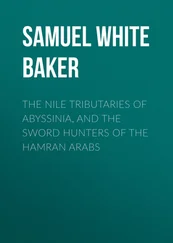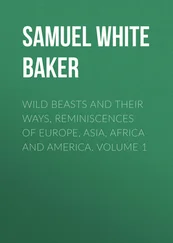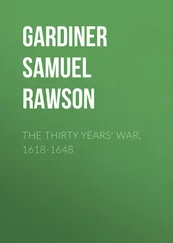Samuel White Baker - Eight Years' Wanderings in Ceylon
Здесь есть возможность читать онлайн «Samuel White Baker - Eight Years' Wanderings in Ceylon» — ознакомительный отрывок электронной книги совершенно бесплатно, а после прочтения отрывка купить полную версию. В некоторых случаях можно слушать аудио, скачать через торрент в формате fb2 и присутствует краткое содержание. Издательство: Иностранный паблик, Жанр: Путешествия и география, История, foreign_edu, foreign_antique, foreign_prose, на английском языке. Описание произведения, (предисловие) а так же отзывы посетителей доступны на портале библиотеки ЛибКат.
- Название:Eight Years' Wanderings in Ceylon
- Автор:
- Издательство:Иностранный паблик
- Жанр:
- Год:неизвестен
- ISBN:нет данных
- Рейтинг книги:4 / 5. Голосов: 1
-
Избранное:Добавить в избранное
- Отзывы:
-
Ваша оценка:
- 80
- 1
- 2
- 3
- 4
- 5
Eight Years' Wanderings in Ceylon: краткое содержание, описание и аннотация
Предлагаем к чтению аннотацию, описание, краткое содержание или предисловие (зависит от того, что написал сам автор книги «Eight Years' Wanderings in Ceylon»). Если вы не нашли необходимую информацию о книге — напишите в комментариях, мы постараемся отыскать её.
Eight Years' Wanderings in Ceylon — читать онлайн ознакомительный отрывок
Ниже представлен текст книги, разбитый по страницам. Система сохранения места последней прочитанной страницы, позволяет с удобством читать онлайн бесплатно книгу «Eight Years' Wanderings in Ceylon», без необходимости каждый раз заново искать на чём Вы остановились. Поставьте закладку, и сможете в любой момент перейти на страницу, на которой закончили чтение.
Интервал:
Закладка:
The whole of the highland district is thus composed of a succession of ledges of great extent at various elevations, commencing with the highest, the Horton Plains, seven thousand feet above the sea.
Seven hundred feet below the Horton Plain, the Totapella Plains and undulating forests continue at this elevation as far as Newera Ellia for about twenty miles, thus forming the second ledge.
Six miles to the west of Newera Ellia, at a lower elevation of about nine hundred feet, the district of Dimboola commences, and extends at this elevation over a vast tract of forest-covered country, stretching still farther to the west, and containing a small proportion of plain.
At about the same elevation, nine miles on the north of Newera Ellia, we descend to the Elephant Plains; a beautiful tract of fine grass country, but of small extent. This tract and that of Dimboola form the third ledge.
Nine miles to the east of Newera Ellia, at a lower elevation of one thousand five hundred feet, stretches the Ouva country, forming the fourth ledge.
The features of this country are totally distinct from any other portion of Ceylon. A magnificent view extends as far as the horizon, of undulating open grassland, diversified by the rich crops of paddy which are grown in each of the innumerable small valleys formed by the undulations of the ground. Not a tree is to be seen except the low brushwood which is scantily distributed upon its surface. We emerge suddenly from the forest-covered mountains of Newera Ellia, and, from a lofty point on the high road to Badulla, we look down upon the splendid panorama stretched like a waving sea beneath our feet. The road upon which we stand is scarped out of the mountain's side. The forest has ceased, dying off gradually into isolated patches and long ribbon-like strips on the sides of the mountain, upon which rich grass is growing, in vivid contrast to the rank and coarse herbage of Newera Ellia, distant only five miles from the point upon which we stand.
Descending until we reach Wilson's Plain, nine miles from Newera Ellia, we arrive in the district of Ouva, much like the Sussex Downs as any place to which it can be compared.
This district comprises about six hundred square miles, and forms the fourth and last ledge of the high lands of Ceylon. Passes from the mountains which form the wall-like boundaries of this table-land descend to the low country in various directions.
The whole of the Ouva district upon the one side, and of the Kotmalee district on the other side, of tilt Newera Ellia range of mountains, are, with the exception of the immediate neighborhood of Kandy and Colombo, the most populous districts of Ceylon.
This is entirely owing, to the never-failing supply of water obtained from the mountains; and upon this supply the wealth and prosperity of the country depend.
The ancient history of Ceylon is involved in much obscurity, but nevertheless we have sufficient data in the existing traces of its former population to form our opinions of the position and power which Ceylon occupied in the Eastern Hemisphere when England was in a state of barbarism. The wonderful remains of ancient cities, tanks and water-courses throughout the island all prove that the now desolate regions were tenanted by a multitude—not of savages, but of a race long since passed away, full of industry and intelligence.
Among the existing traces of former population few are more interesting than those in the vicinity of Newera Ellia.
Judging from the present supply of water required for the cultivation of a district containing a certain population, we can arrive at a tolerably correct idea of the former population by comparing the present supply of water with that formerly required.
Although the district of Ouva is at present well populated, and every hollow is taken advantage of for the cultivation of paddy, still the demand for water in proportion to the supply is comparatively small.
The system of irrigation has necessarily involved immense labor. For many miles the water is conducted from the mountains through dense forests, across ravines, round the steep sides of opposing hills, now leaping into a lower valley into a reservoir, from which it is again led through this arduous country until it at length reaches the land which it is destined to render fertile.
There has been a degree of engineering skill displayed in forming aqueducts through such formidable obstacles; the hills are lined out in every direction with these proofs of industry, and their winding course can be traced round the grassy sides of the steep mountains, while the paddy-fields are seen miles away in the valleys of Ouva stretched far beneath.
At least eight out of ten of these watercourses are dry, and the masonry required in the sudden angles of ravines, has, in most cases, fallen to decay. Even those water-courses still in existence are of the second class; small streams have been conducted from their original course, and these serve for the supply of the present population.
From the remains of deserted water-courses of the first class, it is evident that more than fifty times the volume of water was then required that is in use at present, and in the same ratio must have been the amount of population. In those days rivers were diverted from their natural channels; opposing hills were cut through, and the waters thus were led into another valley to join a stream flowing in, its natural bed, whose course, eventually obstructed by a dam, poured its accumulated waters into canals which branched to various localities. Not a river in those times flowed in vain. The hill-sides were terraced out in beautiful cultivation, which are now waving with wild vegetation and rank lemon grass. The remaining traces of stone walls point out the ancient boundaries far above the secluded valley now in cultivation.
The nation has vanished, and with it the industry and perseverance of the era.
We now arrive at the cause of the former importance of Newera Ellia, or the "Royal Plains."
It has been shown that the very existence of the population depended upon the supply of water, and that supply was obtained from the neighborhood of Newera Ellia. Therefore, a king in possession of Newera Ellia had the most complete command over his subjects; he could either give or withhold the supply of water at his pleasure, by allowing its free exit or by altering its course.
Thus, during rebellion, he could starve his people into submission, or lay waste the land in time of foreign invasion. I have seen in an impregnable position the traces of an ancient fort, evidently erected to defend the pass to the main water-course from the low country.
This gives us a faint clue to the probable cause of the disappearance of the nation.
In time of war or intestine commotion, the water may have been cut off from the low country, and the exterminating effects of famine may have laid the whole land desolate. It is, therefore, no longer a matter of astonishment that the present plain of Newera Ellia should have received its appellation of the "Royal Plain." In those days there was no very secure tenure to the throne, and by force alone could a king retain it. The more bloodthirsty and barbarous the tyrant, the more was he dreaded by the awe-stricken and trembling population. The power of such a weapon of annihilation as the command of the waters may be easily conceived as it invested a king with almost divine authority in the eyes of his subjects.
Now there is little doubt that the existence of precious gems at Newera Ellia may have been accidentally discovered in digging the numerous water-courses in the vicinity; there is, however, no doubt that at some former period the east end of the plain, called the "Vale of Rubies," constituted the royal "diggings." That the king of Kandy did not reside at Newera Ellia there is little wonder, as a monarch delighting in a temperature of 85 Fahrenheit would have regarded the climate of a mean temperature of 60 Fahrenheit as we should that of Nova Zembla.
Читать дальшеИнтервал:
Закладка:
Похожие книги на «Eight Years' Wanderings in Ceylon»
Представляем Вашему вниманию похожие книги на «Eight Years' Wanderings in Ceylon» списком для выбора. Мы отобрали схожую по названию и смыслу литературу в надежде предоставить читателям больше вариантов отыскать новые, интересные, ещё непрочитанные произведения.
Обсуждение, отзывы о книге «Eight Years' Wanderings in Ceylon» и просто собственные мнения читателей. Оставьте ваши комментарии, напишите, что Вы думаете о произведении, его смысле или главных героях. Укажите что конкретно понравилось, а что нет, и почему Вы так считаете.












